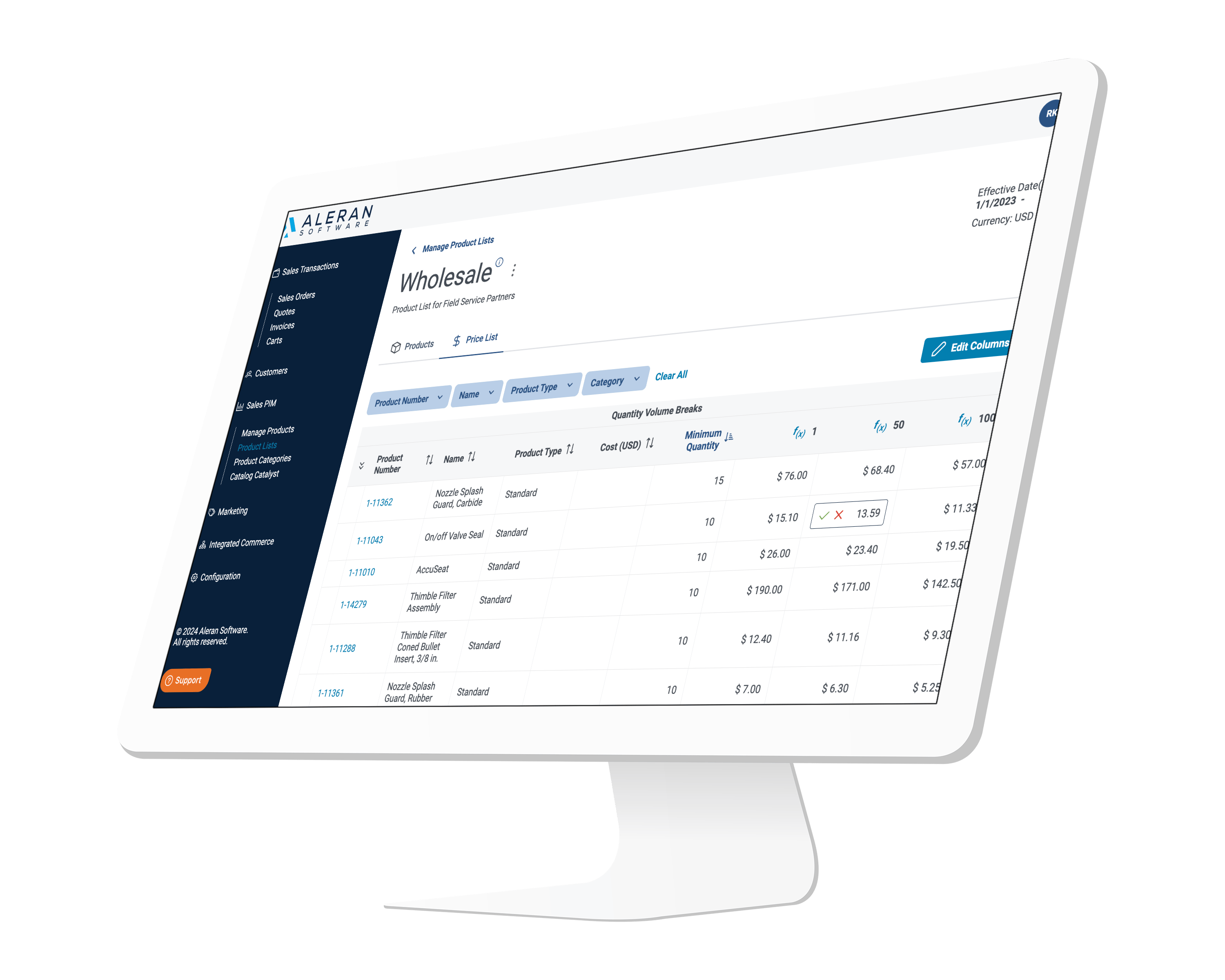One of the most fraught challenges facing brick-and-mortar businesses, both B2B and B2C, making the leap to e-Commerce is in translating product and service catalogs into something that meets the needs of the modern online consumer.
Gone are the days when you could be content with static paper catalogs sent to all of your customers. That’s simply not how today’s consumers shop or do business anymore.
It’s critical to the transition to a fully e-Commerce-based catalog that’s simple to order from, keeps your information accurate and up to date, and provides an intuitive experience your customers will keep coming back to.
Here are some of the e-Commerce catalog management challenges you’re likely to face, as well as the solutions that can transform your catalog into a true online marketplace.
Moving From Static to Dynamic
This is challenge #1. Catalogs are static. An e-Commerce marketplace is not.
Too many companies mistakenly assume that they can just turn their physical catalogs into an online tool by exporting the digital files as PDFs and then posting them on a website. But this is simply not enough in today’s modern online marketplace.
Customers who have grown accustomed to sites like Amazon and eBay do not want a static image they have to scroll through or click to flip pages. This lack of functionality does not suffice in the current environment. You need to translate your physical catalogs into fully dynamic, customizable, and interactive e-Commerce marketplaces.
The solution: Products like Aleran’s Catalog Catalyst, which uses AI-based technology to analyze and tag items, transforming your catalog into a comprehensive, interactive sales tool in a matter of minutes. No manual data entry needed.
This is the first step you need to take if you want to turn your physical catalog into a digital force to be reckoned with.
Pricing Updates
In today’s environment, where pressures on the supply chain can cause prices to fluctuate dramatically in a relatively short period of time, you need the ability to instantly update the prices of your products and have that reflected in what your users are seeing on the front end.
Traditional e-Commerce catalogs do not enable you to make these kinds of price adjustments on the fly. It can take hours or even days for price changes to be reflected, and if any purchases are made during that time, you’re either going to have an upset customer (who will likely ask for a refund) or you’ll have to honor the displayed price and operate at a loss.
The solution: dynamic and interactive tools that let you see each item on the backend and update your prices automatically. Integration is key in this regard because once you make a pricing change within your marketplace, that change needs to filter outward to your sales team’s tools, your accounting platform, and any other software you use in the course of doing business.
When changes are reflected instantly within your entire toolset, you save yourself hours of manual work and interdepartmental strife. Plus, you can be assured that the prices seen by the customer are exactly what they’re going to pay and are based on calculations that leave you with the highest margin possible. And because that information filters down throughout every step of the sales, billing, and shipping process, it’s the best possible experience for all involved.
Tracking Stock
Similar to the challenge of updating prices is the challenge of updating stock.
For some companies, especially those in the B2B space, this particular point may not apply to you. If you provide a service or software license, for instance, you theoretically have an unlimited stock (so long as you have the capacity to keep up with all those orders).
But for those reliant on wholesale distributors, third party vendors, and other businesses for critical parts and products, sudden stock shortages can be a severe drain on your organization. And if you’re still leaning on a catalog for your e-Commerce, this poses real problems with ordering and compromises your ability to please the customer.
The solution, once again, is to be able to make changes to available stock levels on the fly and see those changes filter outward to all other systems and solutions that track stock.
This has traditionally been accomplished by custom integrations, a time-consuming and rather arduous process, but it’s now possible to conduct the same operations much more quickly via APIs that facilitate the sharing of data.
When stock is updated in one platform, APIs ensure the information is sent to all requisite platforms and updated at once. In this way, you’ll never have to worry that what your customers see in your online marketplace isn’t indicative of what you’re actually able to sell them. You’ll also gain confidence that your noted shipping times are precisely what is listed, reducing customer complaints and keeping your sales cycle intact.
Vendor Integration
We’ve hinted at this in the above two points, but a catalog doesn’t do one critical thing? Integrate with all other aspects of your business.
It’s not uncommon, even within small businesses, for a catalog or e-commerce platform to exist on an island. It’s a separate software within the organization. And it may hardly be alone in its status. Accounting may use one type of software to track profit and loss. Your sales team may work within a different silo. Your marketing and advertising teams may work with something else entirely for customer outreach. And shipping may operate on a totally different system too.
This poses challenges for the business that’s trying to be nimble enough to compete with the world’s leading providers of goods and services. You need to be able to integrate these disparate solutions with one another, keeping your team nimble by minimizing manual work.
Again, one of the best ways to do this is through APIs that seamlessly exchange the data you need for your business operations. If you can create one source of truth for your various teams and platforms, you free your team up for other essential tasks and strategy formulation. Plus, you’re once again improving the customer experience by mitigating any potential errors that arise from inaccurate data.
Interface and Experience
Finally, it should go without saying that the user interface and, in turn, the user experience of a catalog, even an e-Commerce catalog, leaves a lot to be desired.
Think about it from the perspective of the buyer. They can’t search the catalog to immediately find what they need. They can’t select their product to save it to a cart. They can’t click to learn more. If they are committed to ordering something, they’re likely forced to send an email or pick up the phone.
If they see something they’d like to purchase, it’s far more likely that they’ll just go to different vendors to see if they can get a similar item for a better price or an improved experience.
Even if this functionality does exist in some capacity, it lives in a sort of liminal space between physical catalogs and true e-Commerce marketplaces. There may be some search functionality or the ability to select items, but it will always pale in comparison to a fully searchable online database that can be adjusted by the user depending on their needs.
To solve the user experience problem, you must look for solutions that can enable you to pivot your catalogs to a fully baked online marketplace. Software like Aleran’s B2C e-Commerce and B2B e-Commerce platforms, when combined with Catalog Catalyst, can help you fully transition to the needs of the modern buyer and seller.
When you have a powerful platform that offers all the functionality your users expect from an e-Commerce tool, your ability to gain and retain customers is increased dramatically. And with APIs that seamlessly integrate data between vendors, the experience for your team and your customers will be the best it can possibly be.
To learn more about the solutions discussed here, browse our website or reach out to us for a demo.



